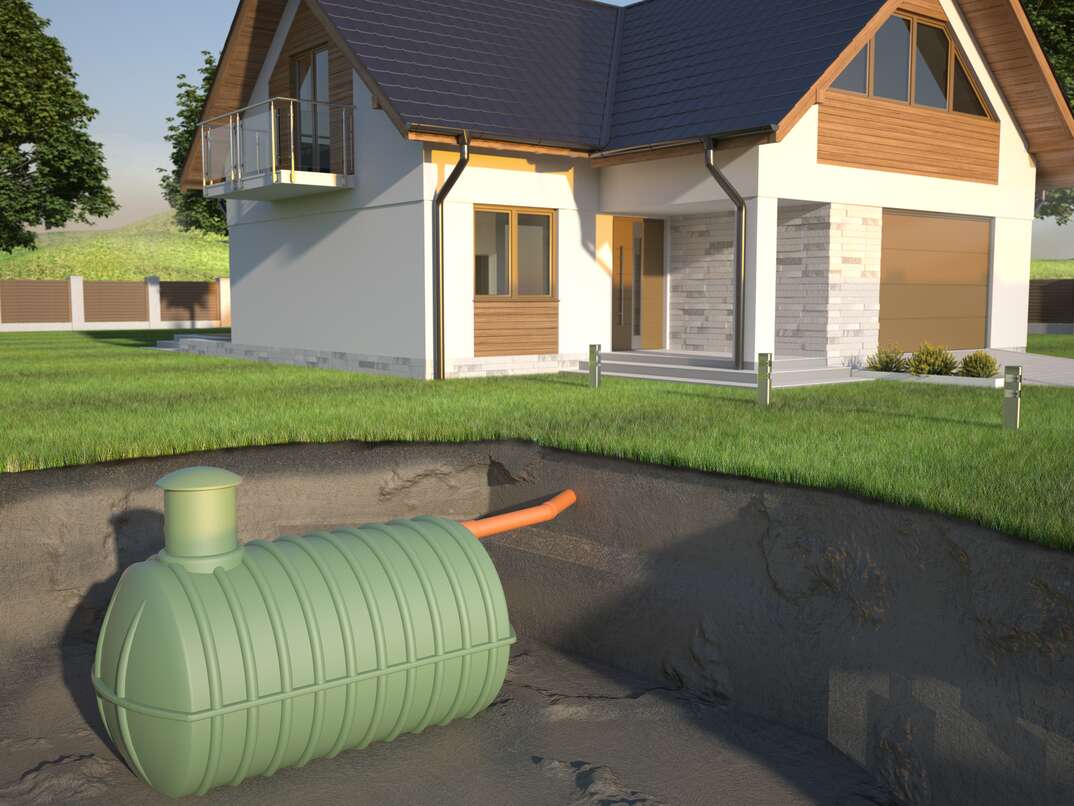Certain aspects of homeownership are often hidden until there is a problem. The septic tank is just one very important, but often neglected element of a home. We often think of it as a convenience as it is assumed to complete its task without any maintenance or even concern. But, as with any other system, septic tanks have an expected lifespan and, eventually they’ll have replacement.

The expense of replacing the septic tank can be a major financial burden on homeowners who do not have a plan. There are many factors that contribute to the total expense, making it essential to understand what factors are considered when budgeting for an upgrade to your septic system.
In order to figure out the actual cost of the new septic system it’s important to consider more than the price. It’s not simply a matter of replacing the old tank with a new one. There are many different components and services factor into the overall expense. Costs are incurred at each phase of the project, including obtaining permits, hiring professionals, and even excavation and construction.
One of the primary concerns is the septic tank replacement cost itself, including the expense of installing a the leach field and septic tank. The cost of a new tank is subject to a wide range of variations based on the size and materials of the tank and also the complexity of the installation. Furthermore, the location of your home, local regulations, and the soil condition could also affect the price. Septic experts can assess your needs and get an exact estimate. They’ll be taking into consideration elements like the dimensions and layout of your leach field. This will ensure that you are aware of the overall expense involved in your septic system replacement project.
Leach fields, also known as drainfields, are another major expense. The drainfield plays an essential part in wastewater treatment and dispersal. Costs for replacing a leach field that has been damaged or ineffective can be considerably increased through carefully planned planning. When calculating the total cost, it is essential to account for aspects like the size and composition of the leach fields, accessibility and soil composition.
In addition to the tangible costs, homeowners must also consider the intangible expenses that come with septic system replacement. This procedure could impact your everyday life by requiring to temporarily leave your house, or limit the use of water while installation is taking place. It is important to consider these inconveniences when planning your project, as they could affect your daily routine, and could result in extra costs such as accommodations or adjustments to your schedule.
Additionally, it’s important to realize that routine maintenance and maintenance of your septic system are crucial for extending its life and minimize the chances of premature replacement. By not taking care of regular maintenance, it could lead to bigger problems later on, such as the tank failing or damage to the drainfield. It is advisable to include costs for septic systems in your budget. This will help you save money.
By now, you may have realized that determining the septic replacement cost is not a straightforward task. The cost of a septic tank replacement will be determined by a range of factors. This includes the dimensions, materials and the complexity of installation as well as the state of your leach field. The place of your home and the local laws may also affect the cost. To obtain a cost estimate that is accurate you must consult an expert with experience in the field of septic replacement.
If you’re considering replacing your septic system, it’s possible to be surprised by the hidden costs. It’s essential to understand the hidden costs prior to making your decision.
The hidden costs associated with the replacement of septic systems include:
Cost of inspections and permits. Before you can begin working to replace your septic tank, you’ll require a permit from your local authorities. The permits can be costly and you may have to cover inspection costs.
The expense of excavation and removal. The old septic system needs to be removed and excavated prior to the installation of a new system. is installed. This can be a very expensive process, especially if it is difficult for the user to access the previous system.
Cost of backfilling, grade. The remaining hole after the removal of the old system will have to be graded and backfilled. It is vital that the drainage system is properly drained.
Costs of landscaping. After the new system been put in place, you might require some landscaping work to make it appear neat and tidy. It’s a lot of work particularly if you have to contract a landscaper.
When planning the replacement of your Septic tank, it’s essential that you include these hidden costs. You can avoid unpleasant surprises later by taking your time planning ahead.
Making the switch to eco-friendly septic systems is a good option for those who are on a tight budget. They are cost-effective and green, as they decrease water pollution and help reduce runoff. Eco-friendly systems for septic are getting more affordable and readily available and are a great option for anyone looking to reduce the environmental impact of their property without going broke. Although there are cost-of-investment initial costs when the switch to an environmentally-friendly system, these costs are far more than covered by savings over the long term. Green living is not only a trend, it’s a vital lifestyle choice all people should adopt if they want to ensure the sustainability of our world. It gives you peace of mind that you are doing your part to help the global community. It also will ensure that your property functions efficiently, with less effort and lower monthly costs.